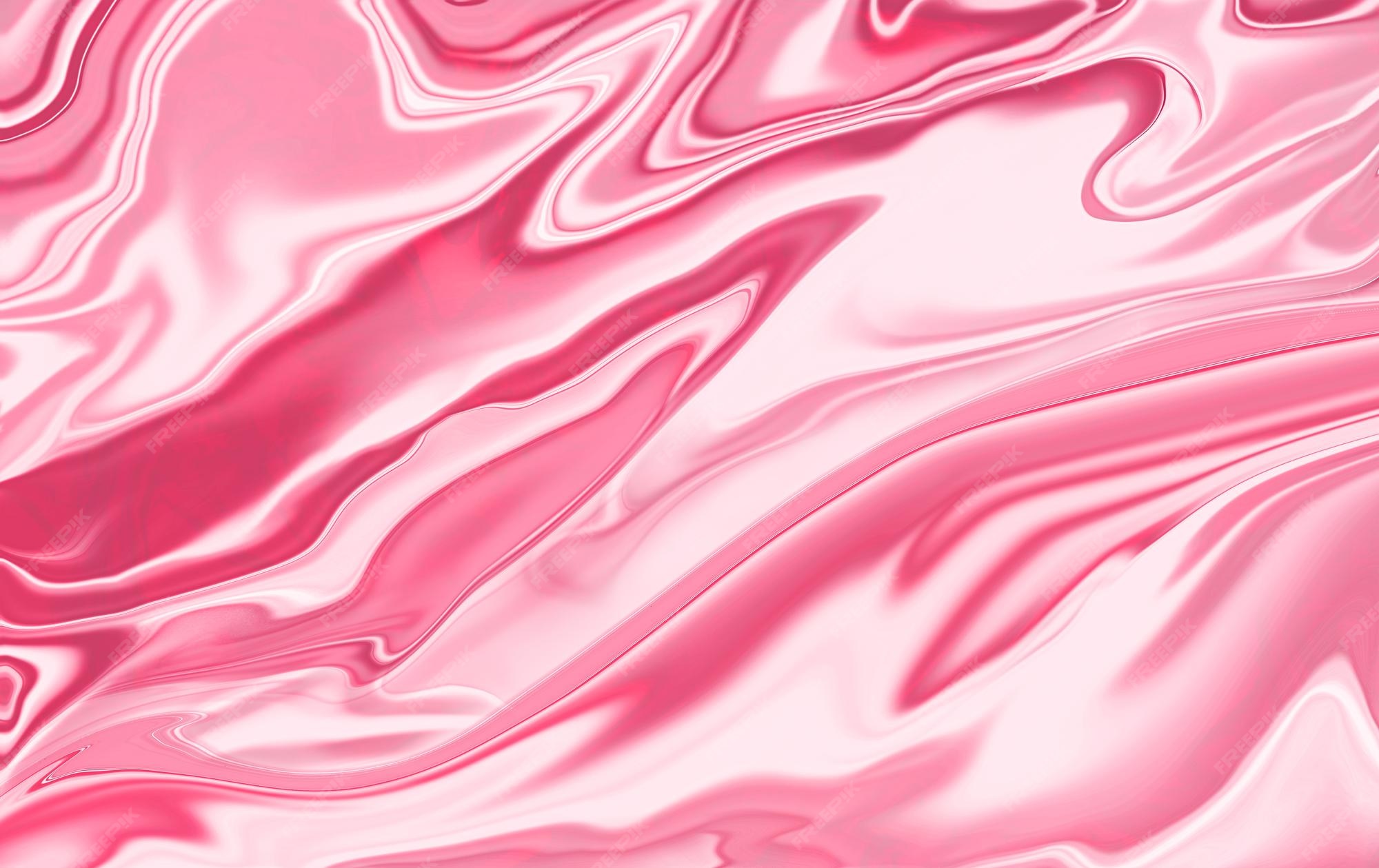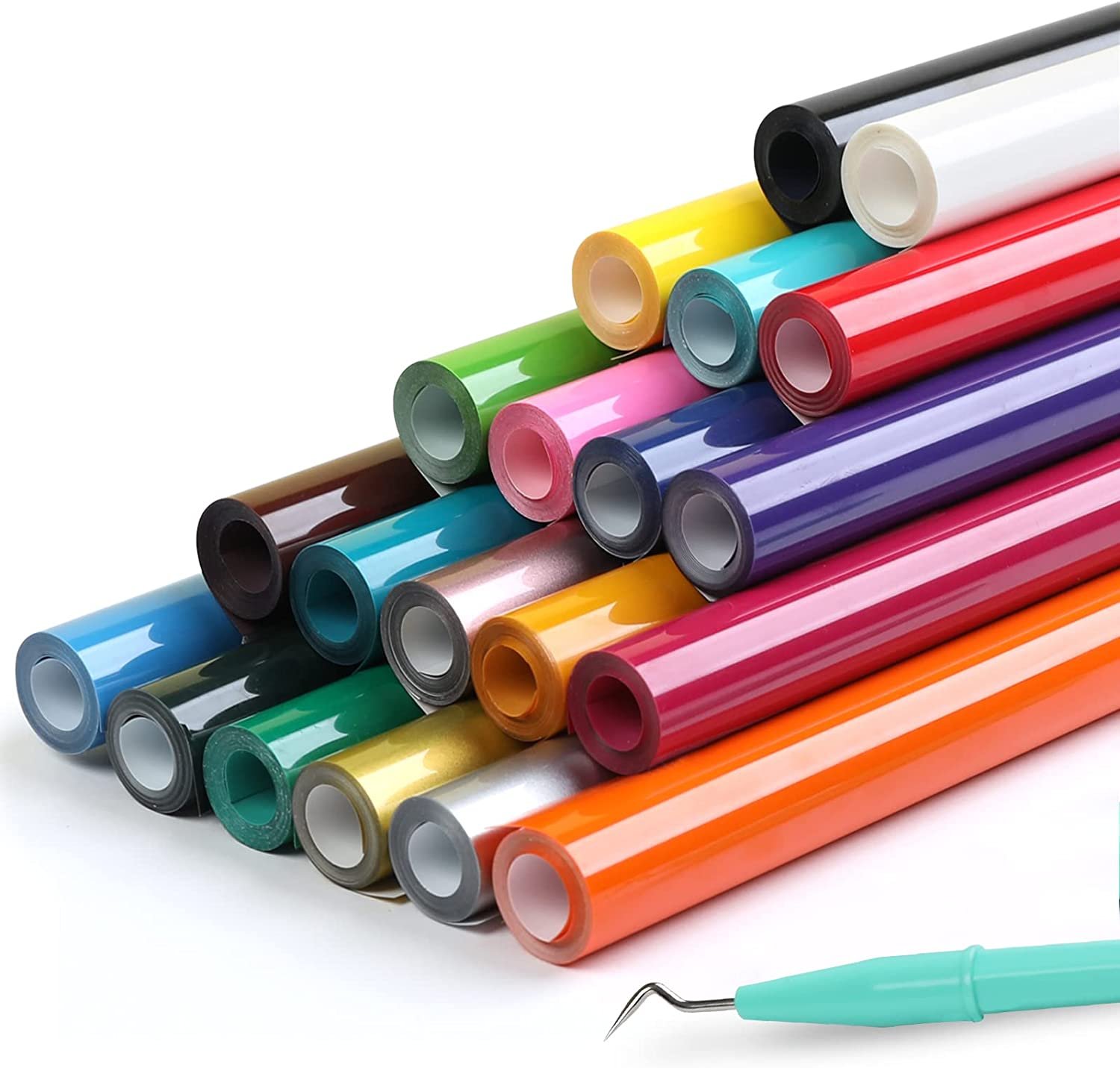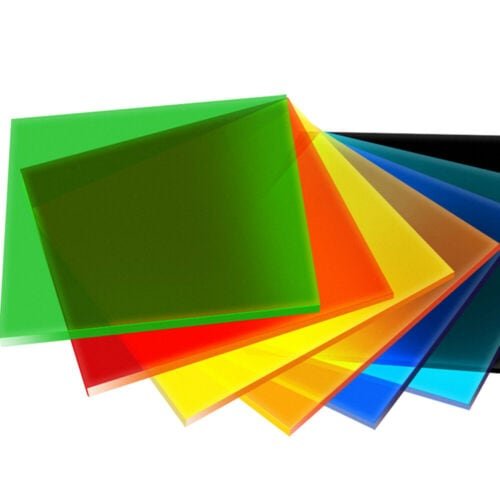You’ve just finished painting your basecoat and realize you don’t have any more acrylic liquid. I know the feeling — having this happened to me many times! Just don’t panic yet! How will you finish the rest of your acrylic nail application? Is there an alternative to acrylic liquid(monomer)
Polyester Resin , Dip Powder and Nail Glue are what you ca use instead of acrylic liquid. These different alternatives to using acrylic liquid will also save you money and help you get more bang for your buck . Keep in mind some of these may not work as perfect as acrylic liquid and could affect the quality/durability of your final nail work.
However, no need to worry because in this article I will showing you how to use dip powder, nail glue and polyester resin in place of acrylic liquid ( monomer). Let’s get to it!
Related Reading
- Can You Mix Acrylic Paint With Resin?
- Can You Use Acrylic Powder as Dip Powder?
- Can You Use Acrylic Paint on Walls?
- Is Acrylic Paint Toxic?
- Can Cricut Maker Cut Acrylic?
What Is Acrylic Liquid (Monomer) And How Is It Used?

For beginners Acrylic liquid , also known as monomer, is a crucial component of acrylic nails and other acrylic-based art forms. It’s a clear, liquid substance that’s mixed with acrylic powder to create a malleable paste that can be shaped , molded and applied on nails . The monomer initiates a chemical reaction with the acrylic powder, causing it to harden and form a solid structure. It is actually easy to do apply and does nit take much time.Roughly 40 minutes -1 hour. For full details visit this article.
My favorite is Modelones 4 oz Monomer Acrylic Nail Liquid – Professional Monomer( It is available in both solid and liquid forms and is typically sold in small bottles or tubes for easy storage and use). Out side the nail world, acrylic liquid is also used in other applications, such as creating 3D nail art or mixing with pigments to create unique acrylic paint colors.
Acrylic Liquid Vs. Activator: What is the Difference?
What is Acrylic Liquid?
Acrylic liquid is a magical potion for creating gorgeous acrylic nails and artwork! It’s a liquid that, when mixed with acrylic powder, forms a mouldable paste that you can use to shape into all kinds of cool designs. Think of it like the secret sauce that makes your nails and art pop!
What Is Acrylic Activator?
Acrylic activator is a substance used in conjunction with acrylic liquid and powder to speed up the curing process and harden the acrylic material, resulting in a durable and long-lasting nail. Some activators also contain special ingredients that help to prevent yellowing or discoloration of the nails over time.
Expert Advice : It’s essential to use acrylic activator in a well-ventilated area to help avoid inhaling the fumes as it can be harmful to your health.
What Can You Use Instead of Monomer( Liquid) for Acrylics
If you are not comfortable using monomer, there are alternative ingredients you can use. The following is a list of ingredients that can be substituted for acrylic monomer . Some of these will also be used as alternative binders or mediums.
1.Polyester Resin
Polyester resin is the most popular substitute for monomer . You can use it in place of acrylic liquid. It has a much lower viscosity than monomer, so it’s easy to mix with other products and doesn’t need to be thinned much. Polyester resin is available in two varieties: slow- and fast-drying. Slow-drying resins are designed for applications like woodcarving and sculpting, while fast-drying resins are best suited for painting.
To use polyester resin in place of acrylic liquid, you should mix it with acrylic powder or a catalyst to initiate the hardening process. The mixing ratio of resin to catalyst should be 1:1. Once mixed, use it as desired. I want to highlight that polyester resin may have a different consistency and curing time than acrylic liquid, so it’s essential to practice and experiment to achieve the desired results.
2.Dip Powder Activator
Dip powder activator is a product used in the application of dip powder nails. You can actually use dip powder activator in place of acrylic liquid. You can use a spray or brush-on formula that’s to apply . The activator helps to harden and seal the dip powder, resulting in a smooth and durable nail surface. It also speeds up the drying process and ensures that the dip powder adheres firmly to the nail.
The key to using dipping powder activator is to understand how it works. The powder contains an acid that reacts with the acrylic to form an ester bond. The bond is very strong and holds together even when wet, which allows you to lay down thick layers of color without them bleeding or pooling. It also speeds up the drying process by forming a barrier between wet paint and air so that moisture can’t escape. This reduces the amount of water that evaporates from your paint layer and keeps it from drying too quickly. The AZUREBEAUTY Dip Powder Activator is a perfect option for anyone that wants a product that is also environmentally-friendly and non-toxic.
Additionally, dip powder works best when used with heavy bodied acrylics ( especially the Liquitex Professional Heavy Body Acrylic Paint ), but you can use it with most brands and types of paint. You’ll get better results if you stick with brands that use quality pigments instead of inexpensive fillers like chalk or talc.
Furthermore, the beauty of dip powder activator is that it is flexible- so you don’t have to worry about ruining your nails if you’re not able to get rid of all the old monomer.
Best Dip Powder Activator You Should Try Out

AZUREBEAUTY Dip Powder Activator 15ml
- Formulated without harsh chemicals, Kiara Sky dip powder activator is a top-notch product designed to make your nails shine and pop
3.Nail Glue
Nail glue is a water-based alternative to traditional acrylics. This product is applied over a base coat, where it acts as a protective layer for your nails. Nail glue also speeds up the drying process by helping your nails to retain moisture as they grow out. I recommend beetles Gel Simply for its odorless nature.
As with traditional acrylics, nail glue contains monomers that help create a bond between your natural nail and the material being applied over top of it. However, this product doesn’t contain any formaldehyde, which means it’s less likely to irritate your skin or cause allergic reactions than other types of artificial nails. I also recommend this article that highlights in details the main differences between Acrylic and Gel Nails.
4.Rubbing alcohol
Alcohol can be used as a substitute for acrylic liquid . It can be used to thin down the consistency of your paste to make it easier to work with. However, it is important to note that using alcohol can also affect your nail application and cause it to dry faster. it’s important to choose the right type of alcohol for your specific application. Rubbing alcohol is available in the pharmacy section of most stores. You should also use a nail moisturiser or cuticle oil after application.
5.Acrylic gel
Acrylic gel is an effective alternative to acrylic monomer because it contains no toxic ingredients that could harm your nails and a lot thicker than acrylic liquid. To use acrylic gel instead of acrylic liquid, you will need to purchase a complete acrylic gel system that includes the gel, a primer, and a curing lamp. Here are the basic steps for using acrylic gel:
- Prepare your nails by filing and buffing them to the desired shape and length.
- Apply a primer to your nails to help the acrylic gel adhere to the natural nail.
- Now to apply acrylic gel and powder to the nail, dip the brush into both the gel and powder and work with speed and precision to prevent the formation of air bubbles or clumps.
- Cure the acrylic gel under a UV lamp for about 1-2 minutes.
- Repeat steps 3 and 4 until you have achieved the desired thickness and shape of the nail enhancement.
File and shape the nail enhancement to the desired shape and length, then buff the surface to smooth out any rough spots.
Moisturize!
Recommended Acrylic Gel: Morovan LED/UV Hard Gels Builder Gel Nail Extension Gel
6.Hydrogen Peroxide
Hydrogen peroxide is a safe and effective alternative to monomer . It’s also cheaper and more readily available. Hydrogen peroxide is also an antiseptic that kills bacteria on contact by breaking down into water and oxygen. It also has mild bleaching properties and can be used as an alternative to bleach when washing clothes or cleaning stains on clothing or skin. You can purchase hydrogen peroxide at most drugstores without a prescription; look for brands like Clearasil or Drano.
What Not to Use as Acrylic Liquid?
Acrylic liquid is a versatile medium, and it can be used to create a variety of different effects. Some nail artists use acrylics as part of their nail application, while others use them as finishing touches. Regardless of how you choose to incorporate it into your crafts, there are some things that should never be used as acrylic liquid.
1)Water
Water is one of the most common substances used for acrylic art, but it’s not something you want to use as a substitute for acrylic liquid. The reason is that water doesn’t harden when it dries like acrylic does; instead, it remains soft and pliable while also allowing other liquids to seep through and ruin your work.
2)Acetone
Acetone is a solvent that is commonly used to remove nail polish and other nail products. However, it is not an appropriate substitute for acrylic liquid in nail enhancements. This is because acetone evaporates quickly and does not provide the same adhesion or strength as acrylic liquid. Attempting to use acetone instead of acrylic liquid will result in a brittle and weak nail enhancement that may crack or break easily.
So, nope. Don’t use it!
3)Mixed Liquids
Another thing you shouldn’t do is mix various types of liquid together . Here’s what I mean – for example, don’t combine water with varnish or varnish thinner in an attempt to use it as acrylic monomer because this can lead to chemical reactions that will will not work and just waste your time .
4)Soy Sauce
Using soy sauce as a replacement for acrylic liquid is not recommended( bad idea) as it can cause allergic reactions in individuals who are sensitive to gluten or wheat products. For starters, soy sauce contains wheat, which is a common allergen, and can lead to symptoms such as hives, itching, or swelling. Additionally, soy sauce does not have the same chemical properties as acrylic liquid and will not provide the necessary adhesion or strength needed for a durable and long-lasting nail enhancement. It is better to use dip powder activator, nail gel or polyester resin.
5)Wine
Wine should not be used as an alternative to acrylic liquid in nail enhancements. Why is that? Because wine contains alcohol( not same as rubbing alcohol), which evaporates quickly and does not provide the necessary adhesion and strength needed for a durable and long-lasting nail enhancement.
Additionally, wine contains sugars and acids, that can negatively affect the acrylic material and cause it to lift, crack, or break. The acidity in wine can also cause the nail bed to become dry and damaged, leading to discomfort or infection. Using wine as a substitute for acrylic liquid can also lead to unpredictable and inconsistent results, making it difficult to achieve the desired nail enhancement.
How to Use Acrylic Powder Without Acrylic Liquid?
Using acrylic powder without acrylic liquid can be challenging for many and may not produce the desired results. To use acrylic powder without acrylic liquid, here’s how you can do it;
- First, prepare the nail bed by filing, buffing, and cleaning it with a nail brush.
- Apply nail primer to the nail bed to help the acrylic powder adhere better(My absolute favorite is SOCORIA Dip Powder Liquid Set that comes with a 2 in 1 Base & Top Coat and Primer & Brush . You can definitely use this as a starter acrylic nail art DIY).
- Place a small amount of acrylic powder onto a dish or container.
- Using a dropper or pipette, add a few drops of alternative liquid, such as nail gel, polyester resin or dip powder activator to the acrylic powder. It is important to use only a small amount liquid and to only add it gradually to prevent the mixture from becoming too runny or thick.
- Mix the acrylic powder and liquid together with a brush until a thick, paste-like consistency is achieved.
- Apply the mixture to the nail bed with a brush, starting at the cuticle and working towards the tip. Be sure to work quickly and carefully to avoid air bubbles or lumps.
- Allow the acrylic to dry and cure for several minutes.
- Once the acrylic has hardened, shape and file the nails to the desired shape.
Lastly, moisturize! It does magic. That’s it. The process is so easy and straight forward.
What Can I Use Instead of Acrylic Powder?

If you’re looking for a replacement for acrylic powder, try corn starch. It’s a cheap, easy and effective method that you can use to create an airbrush stencil on paper or wood.
The technique is very similar to using acrylic powder as a stencil coating. The only difference is that corn starch is less dense and more flexible than acrylic, which makes it easier to work with.
How to Make Acrylic Liquid (Monomer)?
The first step in the process of making liquid acrylic monomer is to make a sodium methoxide solution. This is done by heating up methanol with sodium metal.
- Add Methanol to a beaker and placed over a heat source. Next, add Sodium metal to the methanol. The mixture will begin to bubble as it reacts, slowly dissolving the sodium metal into the liquid.
- Once all of the sodium has dissolved, turn off the heat and let cool for about 15 minutes. The reaction is complete once you can touch the beaker without burning yourself.
- Next you need to add your acrylates to this solution. Acrylates are chemical compounds that contain both an alcohol group and an acid group attached to each other. They are also known as vinyl esters or vinyl ethers depending on their structure.
- To make acrylates, you need to first start with acrylic acid (CH=CHCOOH) and then add ethylene glycol (C2H4O) or diethylene glycol (C2H6O).
Frequently Asked Questions
Is There a Replacement for Acrylic Liquid?
There are plenty of alternatives to acrylic liquid, including nail polish, gel and acrylic powder activator. The main reason why people don’t like using these products is that they’re more expensive than acrylic liquid and require more effort.
Can You Make Your Own Acrylic Liquid?
Absolutely. The disadvantage is that it can be difficult to get the consistency right, which means that your nails may not harden properly.
What Liquid Can Be Used for Acrylic Nails?
You can use polyester resin, nail glue , rubbing alcohol or dip powder activator with acrylic powder for acrylic nails. Bare in mind that some of these may not 100% be as perfect as acrylic liquid ( monomer) . But, they are absolutely a better alternative. No doubt about that !
What Can I Use Instead of Acrylic Activator?
You can use nail glue , polyester resin or rubbing alcohol.
Can I Use Alcohol as Monomer?
You should not use alcohol as a monomer , you can use rubbing alcohol instead. This is because alcohol evaporates rapidly and cannot provide the necessary consistency for the acrylic powder to adhere properly. When the monomer dries too quickly, it can lead to a brittle and uneven finish on the nail surface, which can cause the enhancement to break or lift prematurely.
Conclusion
I hope this article has been helpful to you. If you’re looking for a new way to make nail art, check out some of alternatives above. There may be a new medium out there that will inspire you to do more with your nail art. Be sure to share this article with your friends and family.
SOURCES
- Quora: How can you make your own acrylic liquid?
- Leafy: Acrylic Liquid Substitute
- Brittanica: Acetone






